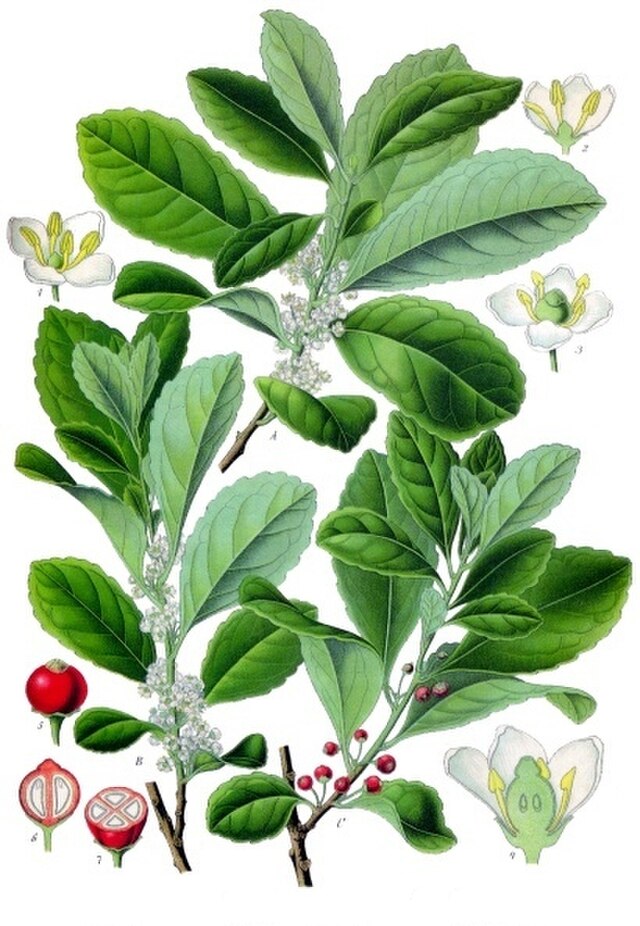Asunción, Paraguay – For generations, and long before the arrival of the Spanish in the region, the community of the Ava Guaraní Indigenous Peoples has faithfully preserved their ancestral practices to preserve the land while managing their crops. These practices encompass a profound understanding of lunar cycles for pruning and harvesting, natural pest and disease management, as well as soil conservation, showcasing their dependability and eco-friendly nature. The Food and Agriculture Organization (FAO) of the United Nations is now highlighting the success of the Ava Guaraní as a lesson in sustainability for all of us.
Five years ago, the government of Paraguay invested some US$90 million in the Poverty, Reforestation, Energy and Climate Change (PROEZA) project, an initiative financed by the Green Climate Fund. Now the project is merely a few years old and already showing great progress with only a fraction (~15%) of the total cost invested.

Offering Yerba mate [Photo credit: GCBA CC BY-SA 2.5]
Advocating for the cultivation of forests and reforestation efforts in Eastern Paraguay, the PROEZA aims to sequester carbon and assist local households in diversifying their agricultural production to bolster resilience against climate change impacts. Paraguay, situated landlocked between Argentina, Brazil, and Bolivia, boasts extensive areas of swampland, subtropical forests, and the Chaco region, characterized by vast expanses of savanna and scrubland.
The Ava Guaraní are intimately familiar with the terrain and witnessed the changes over the past decades on their land. Municipal districts in Eastern Paraguay face heightened susceptibility to the repercussions of climate change, with certain areas displaying elevated levels of both climate and social vulnerability. Deforestation and the degradation of forests exacerbate the vulnerability of communities reliant on family farming for their agricultural output and livelihoods.
One sacred plant in particular has been harvested and prized by the Indigenous community: yerba mate, scientifically known as Ilex paraguariensis. The leaves of the plan are steeped in hot water to create a beverage consumed not only by Indigenous communities but widely in Argentina, Uruguay, Paraguay, and southern Brazil.
The ritual of preparing and sharing yerba mate has deep cultural roots and is considered a symbol of hospitality and friendship in many communities. The leaves of the yerba mate plant are dried and ground into a tea-like mixture, which is then placed in a hollowed-out gourd or a cup. Hot water is poured over the yerba mate leaves, and the resulting infusion is sipped through a metal straw called a bombilla. Yerba mate has a distinct flavor that is both earthy and slightly bitter, and it contains caffeine and other stimulants, providing a mild energy boost.
The FAO reported on one success story of the PROEZA project. One community has planted and cultivated over 1,500 of these plants alongside various other native tree species, crucial for the local ecosystem and serving as traditional sources of food and medicines.
Ariel Benitez who leads a community of 25 families living near the forest told the FAO that “yerba mate is a sacred plant used for our consumption and as a natural remedy,” he explains. “When there are religious ceremonies, it is always present.”
He added “They [the trees] are adapting and growing very well. You can tell that they are in a land that is familiar to them.”
The yerba mate seedlings, planted in May 2022, will be harvest-ready starting in two more years. With harvest records observed elsewhere in the country, they can anticipate over 60 years of productive growth once they reach maturity.
In those 60 years, the trees will not only capture carbon but generate income at about US$500 per acre every year for the community. They will also create valuable shade and conserve the native forest.

Yerba Mate (Ilex paraguensis)
Both Indigenous women and men collaborate on agricultural responsibilities, strengthening community interactions while also supporting another objective of the project: the economic success of Indigenous women. Benitez’s partner, Treli Gabriela Fernández emphasized their commitment to safeguarding and fortifying the remaining forest through the utilization of traditional practices handed down through generations. These valuable traditions will be imparted to the couple’s children.
They highlight that the most demanding periods occur when insufficient food is generated during specific cycles of the year or due to weather-related impacts. In addressing this concern, the PROEZA project actively encourages the cultivation of essential foods such as beans, maize, watermelons, melons, and cassava, contributing not only to families’ self-sufficiency but also to generating income.
At the same time, the project is expected to avoid 7.9 metric tons of carbon emissions and benefit 87,000 people directly; and of course, many more indirectly with yerba mate’s availability. But the project has also halted the effects of scorching summers. Revitalizing the forest has moderated the extreme effects of heat and wind.
More importantly, the forest is sharing its life-giving properties. “The forest is our supermarket,” Fernández said noting the land provides shelter, medicine, and sustenance, “It has everything we need.”
The Wild Hunt is not responsible for links to external content.
To join a conversation on this post:
Visit our The Wild Hunt subreddit! Point your favorite browser to https://www.reddit.com/r/The_Wild_Hunt_News/, then click “JOIN”. Make sure to click the bell, too, to be notified of new articles posted to our subreddit.
